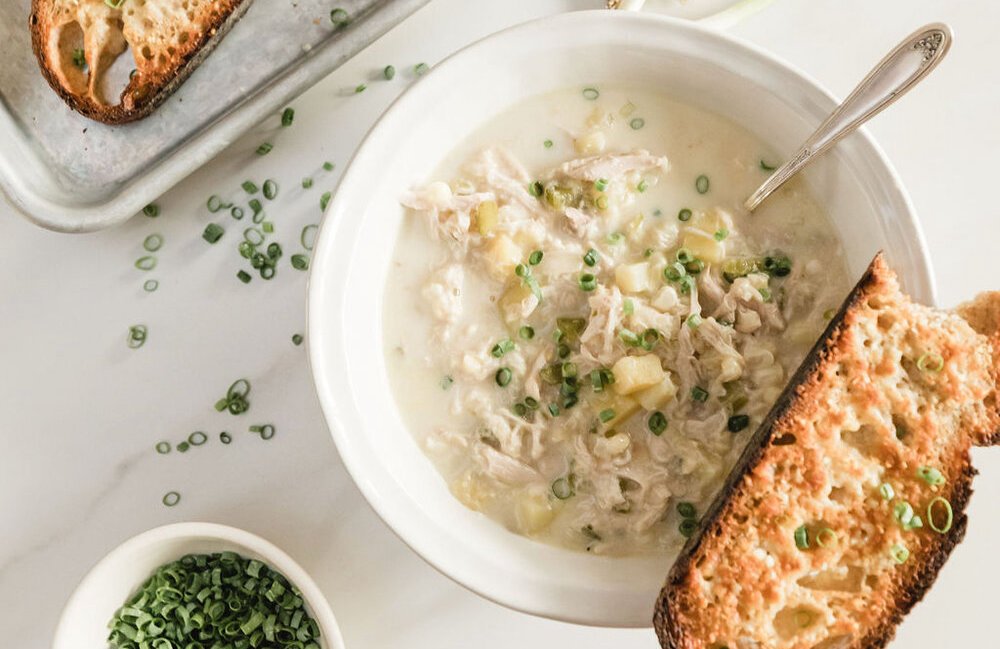Salad bars are making a strong comeback in restaurants, thanks to smart menu design and creative setup ideas that cater to today’s health-conscious diners.
At Hitchcock Farms, we’re proud to supply premium produce to help restaurants keep their salad bars fresh, flavorful, and on trend.
In this blog, we’ll share inspiring salad bar ideas to elevate your menu.
Updating the Restaurant Salad Bar: 12 Fresh Ideas
If you already offer customers a fresh salad bar, you know how important it is to serve your best. If you’re thinking about adding this versatile station to your dining room, you want a setup that sets you apart from the competition.
These 10 salad bar ideas for restaurants work with existing buffets and new serving stations.
Include More Fresh Produce
Make every customer’s trip to the salad bar memorable by offering a bounty of fresh ingredients.
In 2025, Sizzler remains a great example of how a well-stocked, self-serve salad bar can draw in customers and keep them coming back.
Take a cue from the chain’s success, and give your customers an impressive variety of salad bar options.
Pro Tip: To go beyond the usual greens and toppings, consider trending produce like purple Brussels sprouts, baby iceberg, napa cabbage hearts, or fava beans, which offer a fresh twist with their unusual shapes, bold hues, and flavor complexity.
2. Craft Original Salad Dressings
Cater to different tastes and dietary preferences with housemade dressings blended in your restaurant kitchen.
Incorporate signature in-house dressings into branding and marketing strategies, too.
It could lead to your own line of delicious salad dressings featured on local market shelves.
Recipe Inspiration: Try unique combinations with standout flavors, like romaine and apples with creamy blue cheese dressing, or savory peanut dressing paired with napa cabbage and radicchio.
3. Go Beyond Greens With Fruit, Pickles & Specialty Dips
Treat guests to a custom salad bar that goes beyond greens.
Add fresh fruit, pickled vegetables, and olive assortments.
Hummus and specialty dips like whipped feta and spicy avocado cream are always salad bar favorites when paired with housemade pita chips and breadsticks.
4. Put Pasta On The Menu
Pasta salads are always customer favorites, and they pair perfectly with traditional leafy greens.
Refresh these salad bar standards with healthy ingredients like whole grain pastas tossed with broccoli and feta or fresh melon and grilled chicken breast.
Pasta salads also serve well as a base for locally sourced seasonal produce.
5. Recreate the Caesar Salad
The original is iconic, but there are so many ways to recreate the Caesar salad.
Renew customer appreciation for this classic by grilling fresh romaine hearts or substituting yogurt for yolks.
Turn your original Caesar into a signature salad with a toss of handcrafted croutons and a drizzle of housemade dressing.
Recipe Inspiration: For a bolder twist, try a jalapeño and cilantro Caesar dressing over romaine hearts.
6. Serve Salads As Comfort Food
Warm up appetites with a salad bar that brings back favorite food memories.
Surprise and delight with comforting salad combinations like creamy macaroni and crisp bacon or sliced potatoes and boiled eggs.
Turning familiar comfort dishes into new salad bar classics turns first-time guests into loyal customers.
7. Toss With A Touch Of Elegance
A restaurant salad bar can easily rise to the occasion in a fine dining setting.
Complement white table cloth service with an elegant salad buffet featuring an array of fancy salad bar ingredients.
Offer luxurious extras like thin-sliced beef tenderloin, lump crab meat, or fresh peeled shrimp.
8. Side With Housemade Soups
Cost-effective soups and salads make a perfect pairing that works especially well for designing health-conscious menus.
Roll out the steam table, and side the salad buffet with a housemade soup bar featuring chowder, minestrone, or simple creamy broccoli soup.
In the warmer months, serve chilled favorites like gazpacho and vichyssoise.
9. Elevate Salads To Entrees
Upgrade the salad options on your buffet from traditional sides to enticing entrees.
Transition lunch and dinner dishes to the salad bar by recreating them on beds of premium produce.
Keep your main-course salads fresh and customer interest high by rotating seasonal salad ingredients.
Recipe Inspiration: Try our chopped salad with napa cabbage and chicken - hearty enough to stand alone, yet light enough to appeal to health-conscious diners.
10. Cater To The Younger Crowd
Set up a salad station dedicated to serving the tastes of Gen Zers or Gen Alphas.
Please their parents by stocking healthy salad bar ingredients, including proteins like beans, tofu, and hard-boiled eggs.
Most kids are already familiar with the salad bar experience in their school cafeterias, so give them their own station for filling up their plates.
11. Showcase Equipment and Presentation
Make sure your best ideas draw customer attention with a combination of attractive restaurant salad bar equipment and smart presentation techniques.
The latest chilling stations are more than refrigerated units. NSF-certified equipment offers display options that include customizable tray setups, unique sneeze guards, and digital temperature controls.
Think of the salad bar as a stainless steel canvas ready for imaginative displays.
These details help your salad bar look great and stay fresh:
Secure serving bowls in beds of flaked or crushed pellet ice
Keep ingredients fresh in shallow trays, and make sure they’re quickly changed out as needed.
Use bright vegetables around main ingredients to create accents, islands, and even frames of eye-catching, edible color.
12. Prioritize Food Safety and Quality Control
The salad bar holds some of your most perishable inventory, and it’s always there for customers to see.
Here’s how to keep things safe and fresh:
Back-of-house staff should routinely inspect ingredients before stocking the salad station. This kind of monitoring ensures freshness at the salad bar, and it helps reduce waste from spoilage.
Instruct staff to closely monitor the station and quickly restock as trays are emptied.
Clean and sanitize equipment between shifts, and keep up with manufacturers' guidelines for maintenance
If you suspect there might be refrigerant or temperature problems, pull the bar out of service, and call in a certified technician for repairs.
Spotlighting New Ideas
A restaurant’s salad bar offers a unique stage for showing off culinary talent and a commitment to healthy menu engineering.
It’s a cost-effective service that can easily change to reflect the seasons or the latest food trends.
You have to applaud the staying power of a tradition that adapts so well to an ever-changing industry.
We applaud your talent for adapting to changes, too. As a foodservice professional, you keep up with innovations that are challenging and rewarding.
It’s our pleasure to spotlight new ideas that you can turn into successful restaurant business strategies.
Our teams here at Hitchcock Farms are proud to be at your service.
FAQ
Why should I add a salad bar to my restaurant?
A healthy salad bar can elevate your brand and keep it high on customers’ radars.
These are just a few of the business benefits that come with featuring a salad bar in your restaurant.
It satisfies ever-growing consumer demands for healthy dining options.
Many salad bar ingredients are low-cost, and that’s good for your bottom line.
Trips to the salad station let guests see and appreciate more of your restaurant.
Beautiful plates filled with fresh, colorful produce are naturals for social media postings.
What is normally on a salad bar?
A standard salad bar usually includes a mix of fresh and customizable ingredients so everyone can build their ideal plate.
Common items include:
A variety of greens like romaine, iceberg, spinach, and spring mix
Raw vegetables such as tomatoes, cucumbers, carrots, bell peppers, onions, and broccoli
Proteins like hard-boiled eggs, grilled chicken, beans, tofu, or deli meats
Toppings such as shredded cheese, croutons, nuts, seeds, and dried fruit
An assortment of dressings—both creamy and vinaigrette-based
Extras like pasta, pickled veggies, olives, fresh fruit, and sometimes even soup or breadsticks
The goal is to offer enough variety to suit all tastes and dietary preferences.
How should I organize a salad bar?
A well-organized salad bar is easy to navigate and keeps ingredients fresh and safe. Here’s a simple way to set it up:
Start with bowls or plates at the beginning
Follow with greens as the base
Arrange toppings in the order most people build salads: veggies first, then proteins, crunchy toppings, and dressings at the end
Use shallow, chilled trays to keep food cold and easy to swap out
Clearly label each item and provide separate utensils to avoid cross-contamination
Keep an eye on everything—freshness, cleanliness, and temperature control are key






